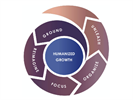Paul Holmes 11 Dec 2016 // 10:10AM GMT

For an industry expanding in size and sophistication, public relations continues to lack the underpinning of a formal body of knowledge. So at the end of the year, we again take a moment to acknowledge and celebrate studies that add an empirical element to our understanding of how to manage the function and maximize its business impact.
Leaving aside our own research projects (including the Global Communications Report and Creativity in PR study), and some long-running research projects like the Edelman Trust Barometer (which foreshadowed events like Brexit and the rise of Donald Trump) The Holmes Report covered a wide range of original research and provocative thought leadership last year. The top 10 topics:
1. Earned Influence, Trust and Performance
Unveiled at Cannes, the Earned Influence Index did not get the attention it deserved. Produced by Ogilvy Public Relations in partnership with PricewaterhouseCoopers, it’s everything thought leadership in our industry needs to be: methodologically robust (the result of 10 years of theoretical modeling, three years of work with PwC clients and a year building the data and analytics capability to deliver results in real-time) and indicative of the industry’s contribution (effective public relations can build all three kinds of trust identified by study author Andrew Tucker, chief executive of Mettle Consulting).
2. CCOs: Access but No Influence
Just as important as research that demonstrates what PR can do is research that demonstrates how far we as an industry have to go, and APCO’s Chief Corporate Communicator survey. The vast majority (89%) of respondents said they readily have direct access to the CEO, and 75% indicated their CEO understands the value of their company’s reputation. Yet only 52% of respondents indicated they report directly to the CEO. Additionally, when asked how much these professionals feel their opinion matters when business-critical decisions are being made, only one-quarter (26%) say they always matter. That’s a welcome reality check.
3. The Power of Relationships
Another survey that debuted at Cannes, Edelman’s second Earned Brand survey may not get the attention that its annual Trust Barometer continues to garner, but its focus on the relationship between brands and consumers is important. “The index confirms marketers have done a great job getting consumers to preference and purchase, but consumers indicated they are willing to go deeper to be committed in their brand relationships,” said Richard Edelman, introducing the survey. According to the index, 86% of consumers will adopt innovation more quickly from a brand with which they have a strong relationship; 87% will pay a premium price; 87% will recommend the brand through liking and sharing; and 88% will defend it against critics.
4. The CCO at a 'Critical Inflection Point'
After our Global Communications Report suggested that corporate communications department budgets (and thinking) were alarmingly stagnant—and long after we questioned the future of the CCO role generally—it was encouraging to see the Arthur Page Society (still the leading organizations for senior communicators) acknowledge that the in-house profession is at a crossroads. More important, The New CCO report suggested a way forward for communicators seeking to maintain and enhance their organizational credibility: embracing data and analytics, engaging fully through social media, becoming content creators, playing offense as well as defense, surrendering control, and thinking beyond communications.
5. You’re Doing It Wrong
The time between the next big thing becoming the current big thing and then becoming the over-hyped thing in need of review and revision appears to be getting smaller. So this year we saw Cohn & Wolfe suggesting that marketers are doing authenticity wrong (consumers define authenticity in more personal and pragmatic terms than many marketers); Allison+Partners arguing that communicators are doing influence wrong (“It is no longer something mercurial that impacts consumers beyond their control but, rather, a conscious, informed action they take to willingly and consensually allow brands the opportunity to change or reinforce thinking”); and DeVries suggesting that brands are doing content wrong (54% believe brands are posting content for content’s sake, and most content is “interrupting, uninteresting and more of the same”).
6. Data is the New Influence
Data and analytics remains one of the hottest topics in PR, and was the focus of research unveiled by Hill+Knowlton Strategies at PRovoke16, the Global Public Relations Summit. Transformation of Influence: How Data is Changing Attitudes and Decisions found that nearly nine out of 10 Americans (88%) say they find that claims are more persuasive if they are supported by data than if they are not. But more than six out of 10 Americans (64%) are not data literate: they do not understand how to access or interpret data on their own. Says H+K’s Peter Zandan, ““Moving confidently into a data-driven world of influence is challenging, but the organizations and individuals who navigate it well are likely to reap the benefits.”
7. Twitter is the Front Line for Crisis Communicators
An overwhelming majority (94%) of crisis either start or spread on Twitter, according to new research from media monitoring platform Visibrain, conducted in partnership with Nicolas Vanderbiest, a crisis communications specialist at the University of Leuven. Vanderbiest examined more than 100 of the biggest PR disasters from the last year and identified that in nearly every case, Twitter had either started the crisis or helped make it significantly worse. Meanwhile, research from the University of Missouri School of Journalism found that unorganized and semi-organized groups use Twitter to communicate and develop stances toward organizations who are experiencing crises.
8. Cracking the Glass Ceiling
Perhaps because a woman was seeking to break America’s ultimate glass ceiling—and running into openly misogynistic resistance—women’s issues were a major focus of industry research in 2016. Perhaps the most interesting example was Global Strategy Group’s study, in partnership with the Rockefeller Foundation, that was unveiled at PRovoke16. It found that female CEOs are much more likely to be blamed for a crisis and that 78% of female executives are asked about balancing work with family while their male counterparts are almost never asked the same question. Meanwhile, an MWWPR study found that women continue to face gender-based bias about their ability to lead, and barriers blocking equal access to leadership opportunities remain stubbornly in place when it comes to race, gender, disability and sexual orientation, according to the latest Ketchum Leadership Communication Monitor, despite the fact that companies recognized with “most admired” reputation status by their industry peers have a higher proportion of female leaders, according to Weber Shandwick’s Gender Forward Pioneer Index.
9. Cultural Misunderstandings Undermine Crisis Response
A study from Conversis conducted in the UK and US found that almost one half (47.8%) of corporate communicators admitted to having experienced a cultural faux pas due to cultural issues and that in more than two thirds of those cases (68.3%), this misunderstanding led to severe ramifications.
10. Companies Don’t Communicate Strategy Internally
Organizations are failing to provide a complete “line-of-sight” to employees, according to the first global study on Organizational Clarity, produced by the Institute for Public Relations. Employees in the five countries examined are confident they understand the core purpose of their organization and find meaning in their work, but believe organizations have much work to be done in prioritizing and communicating strategy internally.


































.jpg)



.tmb-135x100.jpg)













